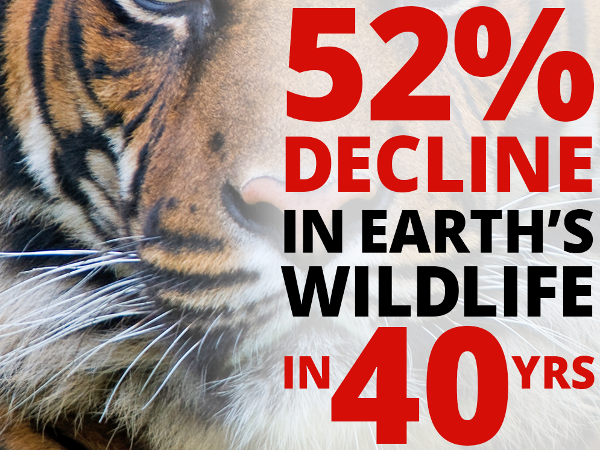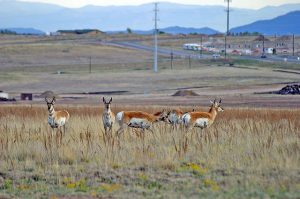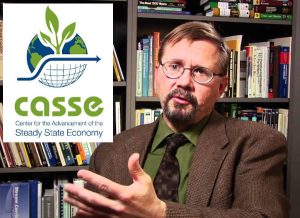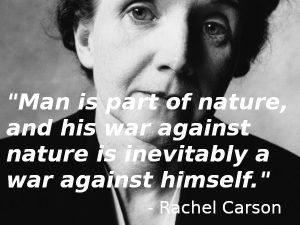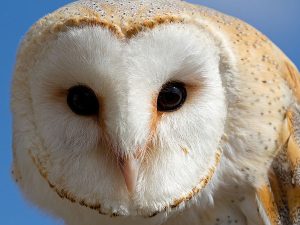It’s been a while since wildlife—not just a species here or there but wildlife at large—has been front and center in the news. Usually the biggest environmental news pertains to climate change at the global level, or local pollution problems such as lead in the water pipes. “Biodiversity” gained traction as an issue in the 1990s, but seems to have slipped off the public’s radar. (When’s the last time you saw it in a prominent newspaper headline?)
“Wildlife,” on the other hand, seems always to be waiting in the political wings. It has plenty of constituents, as evidenced by the millions of members of wildlife organizations including the World Wildlife Fund, National Wildlife Federation, and Defenders of Wildlife. Constituents range from the “hook and bullet” crowd of hunters and fishermen to organizations such as the International Fund for Animal Welfare, which fights for the humane treatment of wildlife such as harp seals, elephants, and wolves. Wildlifers come from both sides of the political aisle and from all over the ethical map.

Rubber pandas and social science at the WWF? Another Living Planet Report leaves us without a clear message on economic growth. (Image: CC BY-SA 2.0, Credit: DocChewbacca)
So, every once in a while wildlife comes out of the wings and onto center stage, as it briefly did this week with the release of the 2020 Living Planet Report by the World Wildlife Fund. The report spawned headlines such as “Wildlife in Catastrophic Decline,” “World Wildlife Plummets,” and “Humans Wiping Out Wildlife.” The report itself used phrases such as “freefall,” “wrecking our world,” and “desperate SOS.”
Unlike most of the headlines, the report does use the phrase “biodiversity,” which the WWF finds has declined 68%—just since 1970! What is their measure of biodiversity? Populations of wildlife. While biodiversity runs along a spectrum from DNA to biomes, trusty wildlife species and populations are still the key indicator of health on our “Living Planet.”
Competing Headlines
Obviously the WWF is trying their best to get media coverage with the use of such dramatic language. They’ve succeeded in a number of key outlets including BBC, NBC, CNN, PBS, and Aljazeera.
But what about Fox News? Wouldn’t the right wing of our polity be interested in wildlife? Certainly the hook and bullet crowd has a lot of skin in the game.
Using Google and the same wildlife search terms, but limited to Fox News outlets, we instead find headlines such as “Starlings captured on film fighting in mid-air,” “Tiger on the loose near Knoxville,” and—wait, what?—something about “…more imperiled species being saved.” The latter was from an article by Rob Wallace, an assistant secretary in the Department of the Interior. Wallace made the ridiculous claim, “No administration in history has recovered more imperiled species in their first term than the Trump administration.”
I spent 18 years at U.S. Fish and Wildlife Service headquarters. I was hired as the first “conservation biologist” in the National Wildlife Refuge System. That was after my Ph.D. research, which was a policy analysis of the Endangered Species Act. I’ve got three things to say about Wallace’s article:
First, no one administration “recovers” imperiled species. By the time a species is listed as threatened or endangered pursuant to the Endangered Species Act, decades of conservation effort (regulation, habitat provision, law enforcement and more) are required to prevent the species from going to the ultimate graveyard of extinction. Real recovery takes science, conservation proficiency, plenty of luck, and decades of time.

Biodiversity is the variety of life and runs from the molecular level to the landscape level. For the Living Planet Report, the World Wildlife Fund focuses on populations of species. (Figure Credits: CASSE.)
Second, once the Fish and Wildlife Service determines that a species has recovered—meaning the population and habitat goals of its recovery plan have been met—delisting or downlisting (from endangered to threatened) is a contentious, laborious, bureaucratic process that itself can take years. Wallace’s article gives credit to Trump for species recovered “since 2017.” What rubbish. Every one of these species would have clawed their way back in the decades preceding Trump, with Trump reaping the benefits of efforts under Obama, Bush, Clinton, and probably Bush the Elder as well.
Third, knowing what we do about Trump’s tampering with the regulatory process, does anyone trust a delisting process under his watch? Right now, for example, most FWS employees aren’t even reporting to the office. They’re teleworking, and that means there are no in-person meetings, no conversations in the halls, no reinforcement of cultural integrity. Who’s minding the store?
It’s not hard to envision a sequence similar or identical to the following:
- Trump tells cabinet members, including the Secretary of the Interior, to do all they can to reduce the regulatory burden on economic activities (to stimulate GDP growth and to appease corporate donors).
- Secretary of the Interior David Bernhardt, the former oil lobbyist, knows exactly what Trump means, and (among other things) tells FWS Director Aurelia Skipwith, the former Monsanto executive, to delist some species. Rob Wallace, the former energy lobbyist and a bureaucratic layer of fat in the chain of command, may or may not have any significant role in the process.
- Skipwith meets with the smallest possible number of bureaucrats in the Ecological Services Program necessary to initiate or speed up the process of delisting species. She inquires, cajoles, and insists, and then prohibits the bureaucrats from talking about the conversation with anyone else.
If you think that last step sounds a bit like conspiracy theory, think again. I know all about gag orders in FWS. Then there was the warning from Brett Hartl of the Center for Biological Diversity, “Aurelia Skipwith has been working in the Trump administration all along to end protections for billions of migratory birds, gut endangered species safeguards and eviscerate national monuments. [She] will always put the interests of her old boss Monsanto and other polluters ahead of America’s wildlife and help the most anti-environmental administration in history do even more damage.”
I’m not denying that a few species are being delisted or downlisted (with hundreds of other species more imperiled by the day). But I am nominating Wallace’s propaganda—“No administration in history has recovered more imperiled species…”—for slippery shibboleth of the year!
Meanwhile, Back at the World Wildlife Fund
The World Wildlife Fund does the world a service by publishing the Living Planet Report. It’s an ambitious effort that provides an easily understood metric, the Living Planet Index. This index is a big-picture metric that should be monitored along with the Genuine Progress Indicator, Human Development Index, Index of Sustainable Economic Welfare, and Gross National Happiness. We should be looking to these metrics rather than blindly following GDP as the measure of welfare.
We do need to measure GDP, just like an obese patient needs to monitor the scale. The other measures, though—including the Living Planet Index—are akin to the blood pressure cuff and the stethoscope, providing key measures of holistic, societal health. They deteriorate as the “patient” (our body economic) gets obese.
It’s a shame, though, that the WWF interprets the Living Planet Index with such mixed messaging. It leaves people like Judy Woodruff on the PBS Newshour blaming the plight of wildlife on “human population and resource consumption” (September 10, 2020). What’s wrong with that, you ask? Isn’t it true?
Yes, but where’s the policy hook? If WWF wants to put a dent in the plight of wildlife and biodiversity, broadcast journalists like Woodruff need to be talking about “economic growth.” Then, suddenly, we hit the mother load of policy implications, starting with overhauling the antiquated Full Employment and Balanced Growth Act of 1978, and changing the entire dialog on the economy, GDP, and growth.
You might then ask, “But wouldn’t Woodruff and the producers figure that out for themselves, that human population goes hand-in-hand with GDP growth, and requires more resource consumption? Wouldn’t they talk about economic growth themselves then?” Nope. Otherwise they would have by now! These broadcasters won’t be uttering the phrase “economic growth,” at least not in response to the Living Planet Report, unless the WWF highlights the point for them and makes the messaging clear and easy to adopt. Meanwhile it’s down to “human population and resource consumption,” and good luck taking that to the policy arena.
WWF Has Huge Potential
Judy Woodruff, along with Lester Holt, Norah O’Donnell, and David Muir (and of course their counterparts around the world) could easily be saying, “The Living Planet Report shows how wildlife is being decimated around the planet by economic growth. As GDP goes up, wildlife populations decline and species are driven toward extinction.” They could easily be saying that if only the Living Planet Report said it that clearly.
Imagine how instantly that would impact the tone of everything from the rest of the show (stock markets, GDP figures, etc.) to the presidential campaigns. For example, Trump’s presidential calling card—GDP growth—would suddenly come into question. Rather than vying with Trump for who can grow GDP faster, other candidates (Democratic or Republican) would be empowered to counter, “Are we sure that’s a good thing?” Serious, high-level, American political dialog about limits to growth would commence at that instant.

Judy Woodruff and PBS producers are hamstrung by muddled messaging from the environmental NGOs. (Image: CC BY 2.0, Credit: PBS NewsHour)
Imagine the upside for WWF, too. They could become the standard bearer for 21st century conservation affairs. They would set themselves apart from virtually all other big environmental NGOs, at least in North America (where only Greenpeace and IFAW have said a peep about GDP growth). And, they could drive home the point every two years with their Living Planet Report.
This would probably entail some heartburn for WWF, which has a messy history of dealing with economic growth. When CASSE led the way in getting The Wildlife Society, the U.S. Society for Ecological Economics, and the American Society of Mammalogists (all scientific, professional societies) in adopting a unified position on economic growth, key opportunities were narrowly missed in the American Fisheries Society (AFS), Society for Conservation Biology (SCB), and Ecological Society of America. In the SCB case, one of the biggest detractors was a social scientist, from WWF!
For at least two decades now, well-intended social scientists have made things difficult for the biologists and ecologists who get it about limits to growth. With their knowledge of concepts such as carrying capacity, niche breadth, and competitive exclusion, ecologists are the “economists of nature.” Unfortunately the social scientists without such background aren’t always interested in the hard science of limits to growth. They tend to be more concerned with social psychology and the “human dimensions” of conservation, and consistently “overthink it” on the topic of economic growth.
Instead of helping to figure out the best ways to communicate the fundamental conflict between growth and conservation, social scientists try to figure out the best ways to avoid even using the phrase “economic growth” because they know that (currently) economic growth is politically entrenched. They’re dialog takers, not dialog makers. Then, they persuade the biologists, ecologists, and leaders of environmental NGOs that they have a better way to go about the social business of conservation. This makes them natural allies with the pro-growth neoclassical economists, who further muddy the waters (such as in the AFS), and they all feed right into the perpetual growth machinery of Wall Street and the Dark Money think tanks.
At CASSE we have challenged the environmental organizations to overcome this history and this culture, and join us in telling the truth—in the clearest of terms—about the fundamental conflict between economic growth and wildlife conservation. WWF may be on the right track. In the “At a Glance” summary of the report is this tidbit: “Global economic growth since WWII has driven exponential human improvements, yet this has come at a huge cost to the stability of Earth’s operating systems that sustain us.” So, at least they are using the phrase “economic growth,” and noting that it can be problematic for wildlife. The phrase is used six other times in the report, but unfortunately without a single clear statement about the fundamental conflict between it and wildlife conservation.
Marco Lambertini, Director General of WWF International, introduces the report thusly: “It’s time for the world to agree [to] a New Deal for Nature and People, committing to stop and reverse the loss of nature by the end of this decade and build a carbon-neutral and nature-positive economy and society” (page 5). On page 99, WWF urges us to develop a “new grammar” of economics, which will then have “profound implications for what we mean by sustainable economic growth, helping to steer our leaders towards making better decisions that deliver us, and future generations, the healthier, greener, happier lives that more and more of us say we want.” Is that clear as mud yet? Imagine the howls on Madison Avenue.
WWF also repeats the tired theme that “the loss of nature is a material risk for economic development” (page 102). The fact that economic growth is what inevitably causes the loss of nature is completely lost upon the likes of ABC, BBC, and CBS. Again, they could probably figure it out if they dug into the details, but even if they wanted to, their producers don’t have time to read between the lines, and they’re not trained for this topic to begin with. They’re going to take directly from what’s in the report, and we can’t blame them.
So BBC, for example, takes a figure from WWF to inform readers that one of the biggest problems of biodiversity decline is “a huge loss to the economy.” What’s the response to that supposed to be? With the pro-growth mindset we have in the USA, the most likely response is, “Hey, we better reverse as many regulations as we can to compensate for that huge loss to the economy.”
With all due respect, Mr. Lambertini and WWF, reversing “the loss of nature by the end of this decade” is utter nonsense when we have almost all the nations of the world pursuing the goal of GDP growth. That said, at least you have upped the bar a bit with explicit references to the economy and especially “economic growth.” We eagerly await the next big step: a Living Planet Report coming clean on the fundamental conflict between economic growth and wildlife conservation.
Want to know more? Read and watch our interviews with Brian Czech – Part 1 and Part 2.

